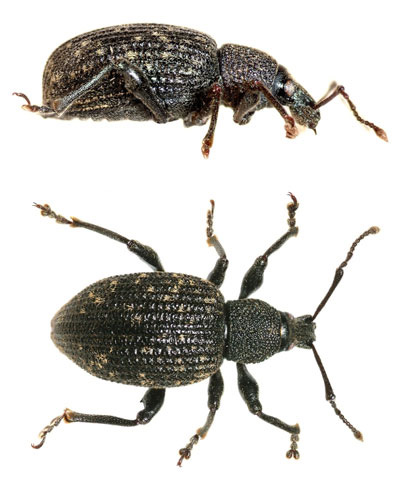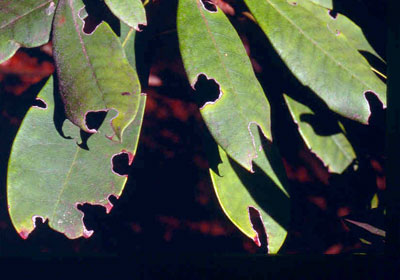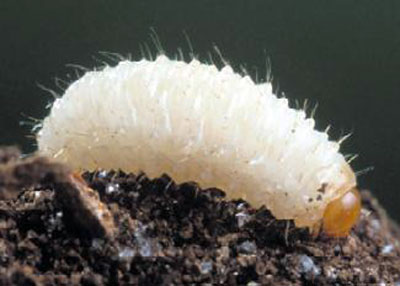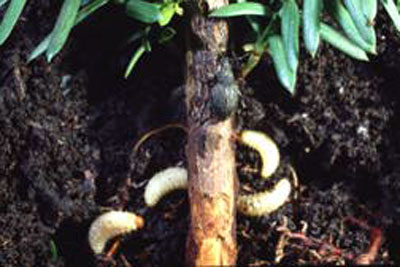Black vine weevil adults emerging in Ottawa County
Black vine weevil adults have been found in Michigan this week, so now is a good time to scout for damage and plan your nursery management strategy.
Tom Dudek, nursery and floriculture educator for MSU Extension, reported seeing the first black vine weevil adults (Photo 1) in a nursery in Ottawa County earlier this week. With a warm, early spring, the weevils are right on target for emerging about two weeks earlier than in an average year.

Photo 1. Black vine weevil adult.
Photo credit: Kent Loeffler, Cornell University, Bugwood.org
Leaf-notching (Photo 2) is a good way to spot areas where the adults are feeding, or alternatively, you can lay down some short sections of boards in the field and check under them during the day. Although leaf-notching is the most obvious symptom of a black vine weevil infestation, it is the larval feeding on the roots and in particular on the stem, just below the soil line (Photos 3 and 4), that causes the most plant injury. Girdled nursery plants may be weakened or sometimes will die.

Photo 2. Black vine weevil adult feeding damage.

Photo 3. Black vine weevil larva. Photo credit: Becker Underwood

Photo 4. Black vine weevil larvae and stem damage. Photo credit: Dan Herms
The larval feeding period is over for this spring, but now is a good time to make plans to manage black vine weevil. The most frequently recommended pesticide treatments are one of the following options (treatments are the same for strawberry root weevil on barberry, spruce and others).
Field-grown yews, arborvitae, Euonymus, Rhododendron or Azalea:
- Spray infested plants with Talstar at one week and two weeks after the first black vine weevil adults are found in the field.
- Apply Discus or another labeled product containing imidacloprid as a soil-directed spray, aimed at the base of the plants, at the grub rate of black vine weevil larvae rate, in early August. Covering the directed spray with a light layer of soil will protect it from photodegradation. Alternatively, a granular formulation could be used. Either way, the insecticide must be watered-in with irrigation or by rain before it will work.
Container-grown plants:
- The same treatments outlined above will work when modified for treating containerized plants, or you can incorporate Talstar into the growing medium as explained on the product label.
Dr. Smitley's work is funded in part by MSU's AgBioResearch.



 Print
Print Email
Email

